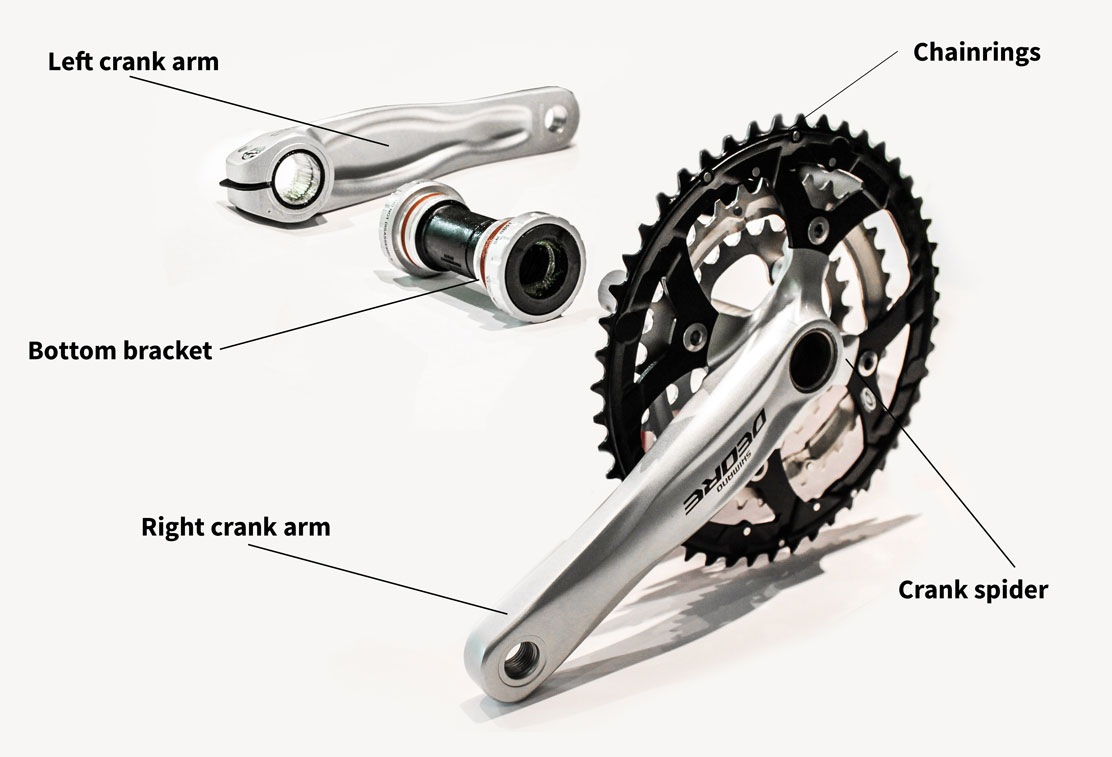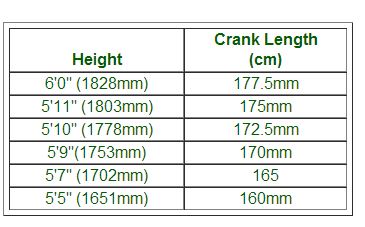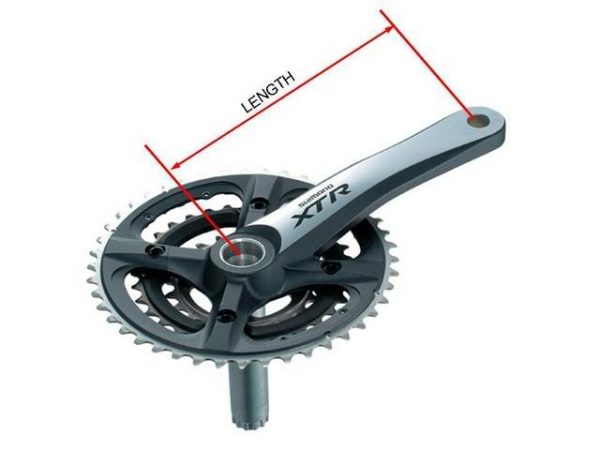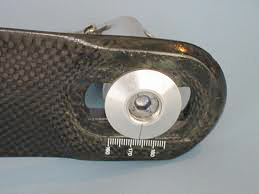Crank arm length is the second most important factor in a comfortable and efficient bike fit. I check it right after saddle height…an expert bike fitter.
 Cranks are the arms that pedals attach to, usually made from aluminium, or carbon for more expensive bikes. When you buy a bike it will already be set up with a set of cranks.
Cranks are the arms that pedals attach to, usually made from aluminium, or carbon for more expensive bikes. When you buy a bike it will already be set up with a set of cranks.
The crank arm length will be the standard size that the manufacturer recommends for that frame size. This is worked out using industry averages that may not be optimal for your body.
 The perfect length crank for you will give these 7 benefits:
The perfect length crank for you will give these 7 benefits:
- A smoother pedal stroke – more efficiency
- Help maintain a higher cadence
- May help you keep a lower position on the bike – more aerodynamic and fast
- Reduce stress on the knee and hip – Anterior Knee Pain
- A solution for less flexible cyclists – tight hamstrings can be helped by a shorter crank
- A shorter crank can allow you to use a bigger gear for the same effort, making you faster.
- Help reduce the “dead spot” on the top of the pedal stroke (this is from 11 o’clock to 2 o’clock). The distance of travel is less on a shorter crank.
How to choose the correct crank length
Expert Tip: Get a bike fit in-store before buying a new bike, as they will replace your cranks with your ideal size free of charge. If you leave the bike fit until after you buy your bike, you will have to buy a new set of cranks. If the store does not offer a bike fit, then get fitted elsewhere so you know your appropriate crank arm length.
Some bike fitters will have an adjustable crank, so the pedal can be moved to simulate crank lengths from 155 – 185mm. You can try this during a bike fitting. A good bike fitter will help you find the best crank arm length for you.
If you are changing the cranks on an existing bike. Get a bike fit and then buy a cheap crank or borrow a crank with a different length. Go for a few rides and see what length is best. When you know what size you need. Go ahead and buy the crank you want.
Is a longer crank more powerful?
There is a common myth among cyclists that a longer crank gives you a more powerful pedal stroke. Common sense may make you feel this true, as a longer lever allows you to use less force to generate more power than a shorter one, right? So the longest crank would be the best choice?
Not so fast. It is harder to keep a higher cadence with a long crank as your feet have to move further to complete the pedal stroke. Gaining speed by spinning up from a standing start can take longer. Too long a crank can create stress on the knees at the top of the stroke.
Signs that your cranks are too long
- You prefer a low cadence – below 75 rpm
- Your knees are close to your chest when in the drops.
- You are often the first to stand up on your pedals when climbing.
- You have hip, knee or lower back pain.
- Your pedal stroke feels uneven.
Benefits of a shorter crank
A shorter crank makes it easier to spin at a higher cadence. The reduction of force can be eliminated by selecting a bigger gear on the rear cassette. Studies have shown a small benefit, around 3% less oxygen used, during sustained effort.
Smaller cranks can allow you to get into a more aerodynamic position. This is because your saddle height is lower with a shorter crank, allowing you to bend more at the waist when you reach for the handlebars. This position can reduce your drag, especially if you are using aero bars.
How do I Measure a Crank?
Crank arm length is measured from the middle of the crank thread to the middle of the pedal thread.

What Length Crank Should I Choose?
The correct crank length puts your knee in the correct position at the top of the pedal stroke, and still leaves space between your knees and your stomach. Your height, the length of your legs and the length of your femur and lower leg are all important factors.
A quick guide is that shorter riders need a shorter crank and taller riders need a longer crank, but there are benefits in going shorter than longer for most cyclists.
- Triathletes and time trial riders will use a shorter crank. Two reasons are: to get a more aerodynamic position and to use less oxygen (around 3% less) during the event.
- Older or less flexible riders also benefit from a shorter crank.
- Longer cranks are better at slow to moderate speeds and for climbing out of the saddle (unless you run a bigger gear to compensate).
- Shorter cranks are easy to spin up, best at high speed, for steady tempo rides and are probably faster overall for the average flat or moderately hilly ride.
- Some riders just feel happier with a powerful, lower cadence pedal stroke. They will prefer a longer crank.
Advice from an expert bike fitter
Deep Dive – A detailed look at the science
If you’re interested in learning more, check out this great resource featuring the research work of Jim Martin and Steve Elemer on the pedalling rate, crank length, pedalling technique and non-round chainrings.
Another excellent resource is this guide from Bike Dynamics, bike fitters in Leamington Spa, Warwickshire, UK.